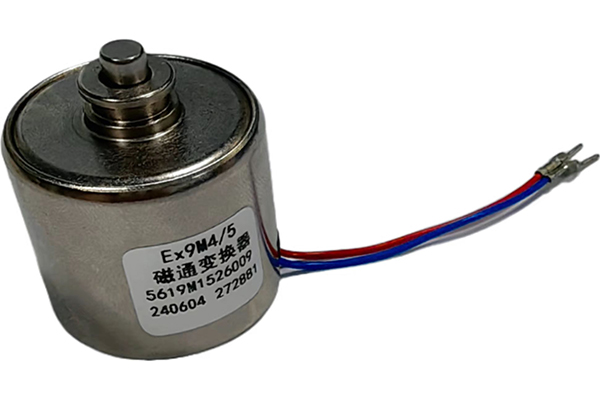Understand how single coil transformer accurately controls voltage in one article
Release Time : 2025-03-25
In terms of voltage control, although the structure of single coil transformer is relatively simple, it can still achieve a certain degree of voltage precision control through reasonable design and adjustment.
1. Basic principle
The working principle of single coil transformer is based on the law of electromagnetic induction, that is, when an alternating current flows through the input coil (also called the primary coil or primary coil), an alternating magnetic flux will be generated in the iron core, and this magnetic flux will pass through the output coil (also called the secondary coil or secondary coil), thereby inducing an electromotive force in the output coil, and then generating an output voltage.
2. Methods for accurate voltage control
Adjusting the turns ratio: The voltage conversion capability of a single coil transformer mainly depends on its turns ratio (that is, the ratio of the number of turns of the input coil to the number of turns of the output coil). By accurately calculating and adjusting the number of turns of the input coil and the output coil, a specific voltage conversion ratio can be achieved. For example, if the voltage needs to be reduced, the ratio of the number of turns of the output coil to the number of turns of the input coil can be increased; conversely, if the voltage needs to be increased, the number of turns of the output coil can be reduced.
Select the appropriate core material: The choice of core material has an important impact on the performance of the transformer and the accuracy of voltage control. Core materials with high magnetic permeability can reduce magnetic resistance, improve the efficiency of the transformer, and help achieve more accurate voltage control. At the same time, the saturation magnetic induction intensity of the core material should also be taken into account to avoid magnetic saturation under high voltage or high current, which will lead to failure of voltage control.
Optimize circuit design: In circuit design, a feedback mechanism can be introduced to achieve more accurate voltage control by monitoring the output voltage and adjusting the input current or voltage. For example, a voltage regulator or voltage stabilization circuit can be used to stabilize the output voltage so that it can remain within a predetermined range when the load changes or the input voltage fluctuates.
Consider losses and efficiency: The transformer will generate various losses during operation, including copper loss, iron loss, etc. These losses will affect the efficiency and voltage control accuracy of the transformer. Therefore, it is necessary to consider how to reduce these losses during design, such as by optimizing the coil structure, selecting appropriate wire specifications and core materials, etc.
Accurate measurement and calibration: During the production process, the transformer needs to be accurately measured and calibrated to ensure that its parameters such as turns ratio and impedance meet the design requirements. At the same time, regular inspection and maintenance are also required during use to ensure its stable and reliable performance.
3. Precautions in practical applications
Load matching: In practical applications, attention should be paid to the matching of load and transformer. If the load is too large or too small, the output voltage of the transformer may deviate from the preset value. Therefore, when selecting a transformer, it is necessary to make a reasonable choice according to the actual load conditions.
Temperature change: Temperature change also has a certain effect on the performance of the transformer. As the temperature increases, the magnetic permeability of the core material decreases, resulting in changes in the output voltage. Therefore, the influence of temperature factors needs to be considered during design and use, and corresponding measures need to be taken to compensate or correct.
Electromagnetic interference: Electromagnetic interference is also an important factor affecting the voltage control accuracy of the transformer. In practical applications, appropriate shielding and filtering measures need to be taken to reduce the impact of electromagnetic interference on the performance of the transformer.
In summary, although the single coil transformer is relatively simple in structure, precise voltage control can still be achieved by accurately adjusting the turns ratio, selecting appropriate core materials, optimizing circuit design, considering losses and efficiency, and accurately measuring and calibrating. At the same time, in practical applications, it is also necessary to pay attention to the impact of factors such as load matching, temperature changes, and electromagnetic interference on transformer performance, and take corresponding measures to compensate or correct them.
1. Basic principle
The working principle of single coil transformer is based on the law of electromagnetic induction, that is, when an alternating current flows through the input coil (also called the primary coil or primary coil), an alternating magnetic flux will be generated in the iron core, and this magnetic flux will pass through the output coil (also called the secondary coil or secondary coil), thereby inducing an electromotive force in the output coil, and then generating an output voltage.
2. Methods for accurate voltage control
Adjusting the turns ratio: The voltage conversion capability of a single coil transformer mainly depends on its turns ratio (that is, the ratio of the number of turns of the input coil to the number of turns of the output coil). By accurately calculating and adjusting the number of turns of the input coil and the output coil, a specific voltage conversion ratio can be achieved. For example, if the voltage needs to be reduced, the ratio of the number of turns of the output coil to the number of turns of the input coil can be increased; conversely, if the voltage needs to be increased, the number of turns of the output coil can be reduced.
Select the appropriate core material: The choice of core material has an important impact on the performance of the transformer and the accuracy of voltage control. Core materials with high magnetic permeability can reduce magnetic resistance, improve the efficiency of the transformer, and help achieve more accurate voltage control. At the same time, the saturation magnetic induction intensity of the core material should also be taken into account to avoid magnetic saturation under high voltage or high current, which will lead to failure of voltage control.
Optimize circuit design: In circuit design, a feedback mechanism can be introduced to achieve more accurate voltage control by monitoring the output voltage and adjusting the input current or voltage. For example, a voltage regulator or voltage stabilization circuit can be used to stabilize the output voltage so that it can remain within a predetermined range when the load changes or the input voltage fluctuates.
Consider losses and efficiency: The transformer will generate various losses during operation, including copper loss, iron loss, etc. These losses will affect the efficiency and voltage control accuracy of the transformer. Therefore, it is necessary to consider how to reduce these losses during design, such as by optimizing the coil structure, selecting appropriate wire specifications and core materials, etc.
Accurate measurement and calibration: During the production process, the transformer needs to be accurately measured and calibrated to ensure that its parameters such as turns ratio and impedance meet the design requirements. At the same time, regular inspection and maintenance are also required during use to ensure its stable and reliable performance.
3. Precautions in practical applications
Load matching: In practical applications, attention should be paid to the matching of load and transformer. If the load is too large or too small, the output voltage of the transformer may deviate from the preset value. Therefore, when selecting a transformer, it is necessary to make a reasonable choice according to the actual load conditions.
Temperature change: Temperature change also has a certain effect on the performance of the transformer. As the temperature increases, the magnetic permeability of the core material decreases, resulting in changes in the output voltage. Therefore, the influence of temperature factors needs to be considered during design and use, and corresponding measures need to be taken to compensate or correct.
Electromagnetic interference: Electromagnetic interference is also an important factor affecting the voltage control accuracy of the transformer. In practical applications, appropriate shielding and filtering measures need to be taken to reduce the impact of electromagnetic interference on the performance of the transformer.
In summary, although the single coil transformer is relatively simple in structure, precise voltage control can still be achieved by accurately adjusting the turns ratio, selecting appropriate core materials, optimizing circuit design, considering losses and efficiency, and accurately measuring and calibrating. At the same time, in practical applications, it is also necessary to pay attention to the impact of factors such as load matching, temperature changes, and electromagnetic interference on transformer performance, and take corresponding measures to compensate or correct them.







